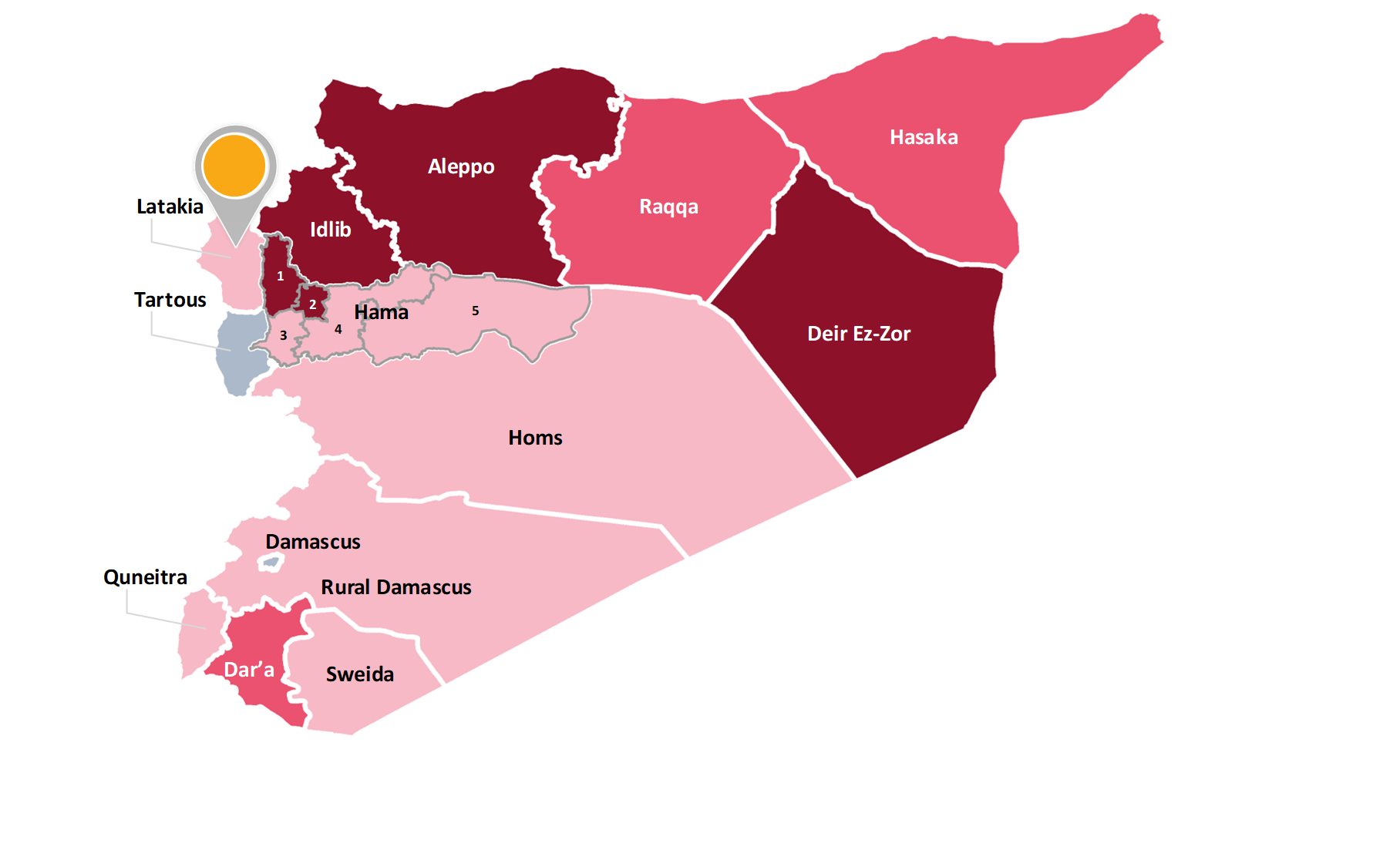[Main COI reference: Security 2020, 2.4.]
Latakia governorate is situated in the northwest of the country and borders the Mediterranean Sea to the west, Tartous to the south, Hama to the east, and Idlib to the northeast. It also shares an international border with Turkey to the north. Latakia is divided into four administrative districts: Latakia, Al-Haffa, Al-Qardaha, and Jablah. Population estimates for 2016 by the Syrian Central Bureau of Statistics indicated that Latakia governorate had 1 453 000 inhabitants. In March 2019, it was reported that the GoS reached an agreement with Iran to permit Iran to manage Latakia Port, the main port in Syria.

The SAA and various pro-GoS militias were operating in the governorate. The Russian air force had acquired its own airbase and landing strip at Hmeimim, from where it conducts expeditionary operations to support the GoS. The Iranian paramilitary, the IRGC, is also present in the governorate.
Rebel forces had kept a foothold in northeast Latakia for nearly the entire length of the civil war in Syria, creating a frontline in the northeast mountains. Areas in Latakia near the border to Idlib were dominated by the jihadist group HTS.
As of January 2020, all of Latakia was under pro-government control except a strip along the Turkish border and the border to Idlib governorate which was under the control of Al Qaeda-linked groups.
The conflict focused in the area of Jabal Kabani in Al Haffa, where airstrikes, barrel bomb drops, and intensive artillery shelling were reported. In December 2019, there were reports of battles between government forces and the jihadist groups HTS and TIP near Kabani, and the territory in the Zuweiqat Mountains had been captured and recaptured by the belligerents after several days of battling. In January 2020, sources noted that the fighting for Kabani had gone on for eight months. Reported incidents in the governorate also included a car bomb attack in a crowded square in Latakia City in January 2019.
ACLED recorded 560 security incidents (average of 11 security incidents per week) in Latakia governorate in 2019, the large majority of which were coded as explosions/remote violence. In the first two months of 2020, the number of security incidents in the governorate was 31, amounting to an average of 4 security incidents per week.
During 2019, security incidents occurred in all districts of the governorate, with the largest overall number being recorded in the northern part of Latakia and the eastern part of Al-Hafa.
In 2019, VDC recorded a total of 7 civilian fatalities and SNHR recorded a total of 11 civilian fatalities in the governorate. Compared to the official figures for the population in the governorate as from 2016, these represent respectively less than 1 or 1 civilian fatality per 100 000 inhabitants.
In 2019, around 17 000 IDP movements were recorded to or within Latakia governorate, 8 000 of which were within the governorate, while the rest came mainly from Hama, Aleppo, Homs and Damascus governorates. Around 1 300 displacement movements were recorded during 2019 from Latakia governorate to Tartous governorate. In July 2019, the third largest movement was recorded in Latakia governorate with a total of 3 358 individuals tracked from Hama governorate. Around 2 000 return movements were recorded from Latakia governorate in 2019, there were no reported returns to or within Latakia during the year.
|
|
Looking at the indicators, it can be concluded that indiscriminate violence is taking place in the governorate of Latakia, however not at a high level and, accordingly, a higher level of individual elements is required in order to show substantial grounds for believing that a civilian, returned to the territory, would face a real risk of serious harm in the meaning of Article 15(c) QD.
|
